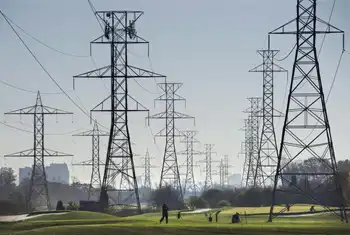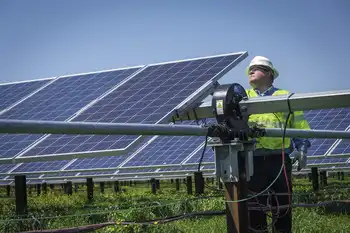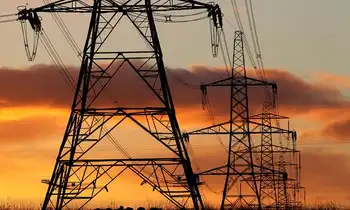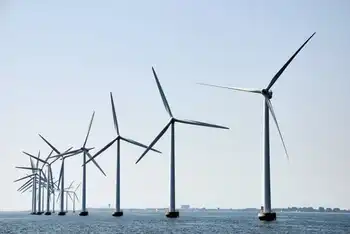Batteries present a great hope for U.S. manufacturing
By Electronic Design
Electrical Testing & Commissioning of Power Systems
Our customized live online or in‑person group training can be delivered to your staff at your location.

- Live Online
- 12 hours Instructor-led
- Group Training Available
Much of the economic stimulus package has been directed toward the fabrication and recycling of lithium-ion (Li-ion) batteries in the United States.
The $790 billion economic stimulus legislation includes tens of billions of dollars in loans, grants, and tax incentives for advanced battery research and manufacturing. For example, the stimulus package includes $2 billion for grants that would support the manufacturing of advanced vehicle batteries.
The hope is that provisions in the congressional stimulus bill could help jump-start a new, multibillion-dollar industry in the United States for manufacturing advanced batteries for hybrids and electric vehicles and for storing energy from the electrical grid.
The belief that Li-ion batteries are an important part of our future is evidenced in actions other than the stimulus package. On September 17, U.S. Energy Secretary Steven Chu named John Bannister Goodenough as one of the winners of the Enrico Fermi Award, one of the most prestigious science and technology honors awarded by the U.S. government.
Goodenough received the Fermi award in recognition for his contributions to materials science and technology, especially the science underlying Li-ion batteries. The U.S. Department of Energy is showing a vote of confidence for Li-ion technology as the future of our increasingly mobile world.
A physicist by training, Goodenough identified and developed the cathode materials for the Li-ion rechargeable battery that is ubiquitous in todayÂ’s portable electronic devices. IÂ’d like to share the development timeline of Li-ion batteries and GoodenoughÂ’s role in it. ItÂ’s interesting to see the history behind a technology that is becoming indispensable to our economy and culture.
Michael Stanley Whittingham of the State University of New York first proposed Li-ion batteries in the 1970s. Whittingham used titanium (II) sulfide as the cathode material and lithium metal as the anode material.
Lithium batteries in which the anode is made from metallic lithium pose severe safety issues. As a result, Li-ion batteries were developed in which the anode, like the cathode, is made of a material containing lithium ions.
Rachid Yazami and his colleagues at the Grenoble National Polytechnic Institute (INPG) and National Center for Scientific Research (CNRS) in France first observed reversible lithium intercalation in 1980. In 1981, Bell Labs developed a workable graphite anode thatÂ’s now the most common anode material for Li-ion batteries.
Goodenough and Michael Thackeray identified manganese spinel as a cathode material in 1983. Spinel showed great promise, but it wasnÂ’t commercialized until much later.
Sony released the first commercial Li-ion battery in 1991, following groundbreaking research on layered lithium-cobalt-oxide cathode materials by a team led by Goodenough. These batteries revolutionized electronics and are still ubiquitous in most consumer products.
Then in 1996, Akshaya Padhi, a graduate student at the University of Texas, and Goodenough identified lithium iron phosphate (olivine) as a potential alternative cathode material for Li-ion batteries.
In 2004, Yet Ming Chiang of the Massachusetts Institute of Technology increased this technologyÂ’s performance by utilizing iron-phosphate particles of less than 100 nm in diameter. This miniaturized the particle density by almost a hundredfold, increased the surface area of the electrode, and improved the batteryÂ’s capacity and performance.
Nano-iron phosphate was immediately recognized for its superior rate capability. It was commercialized by A123 Systems. When environmental regulations began to limit metals such as cadmium, iron phosphate and the manganese spinel immediately began to replace nickel-cadmium (NiCd) batteries in the multibillion-dollar cordless power tool market.
Iron-phosphate is superior over other cathode materials in terms of cost, safety, stability, and performance, and itÂ’s most suitable for large batteries for electric automobiles. Electric vehicles are certainly supported by the U.S. government today, so investors snapped up shares of A123 Systems in their debut on September 24, despite the companyÂ’s losses, showing the widespread belief that next-generation battery technology will propel the cars and trucks of the future.
What ripple effect will the electric vehicle technology initiatives have on other industries like portable medical, military, and industrial equipment? Most portable equipment is still powered by the Li-ion battery technology commercialized by Sony in 1991 and optimized for laptops and cell phones. Several years ago, when cell manufacturers set their sights on the power-tool market, cells developed in this effort were also adopted for a large number of other high-current applications.
With the stimulus money, cell manufacturers are poised to finally overcome the technical challenges for the electric vehicle market. The major challenges in battery management and cycle life are universal, and innovation in this area will enable improvements in existing portable products and the invention of new portable products in many other industries.











